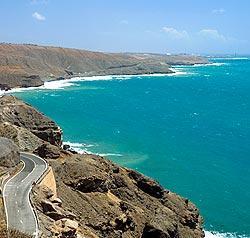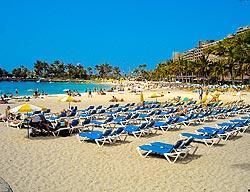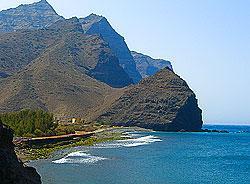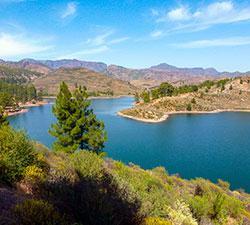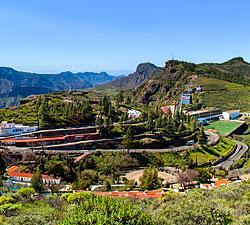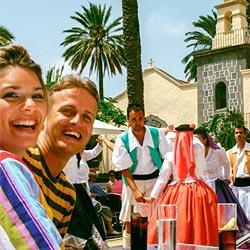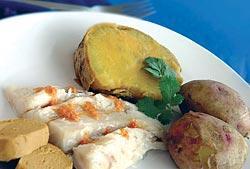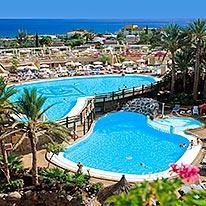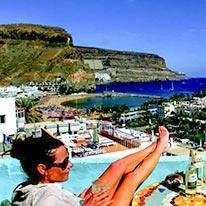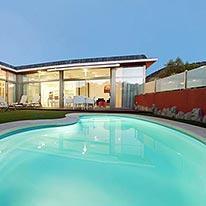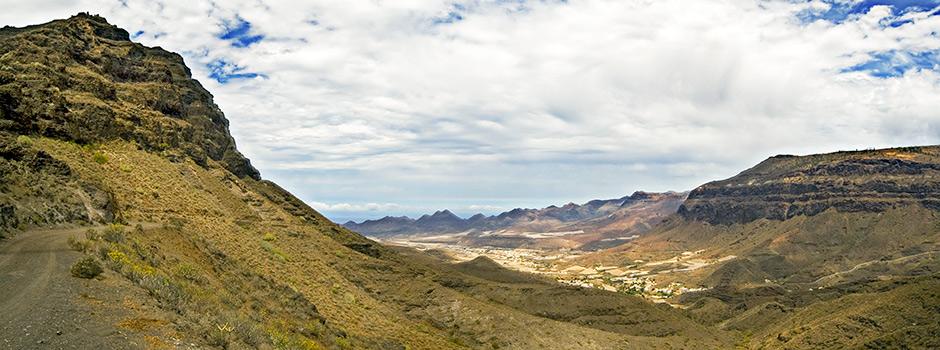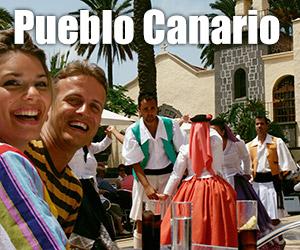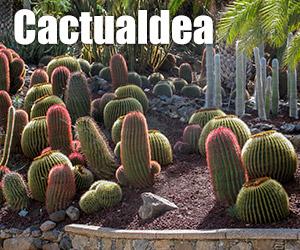The twisting road that leads you through a fertile valley, criss-crossed with ravines, to the small town of San Nicolás de Tolentino makes for an interesting drive! The first ravine you will pass is the Barranco de Veneguera, a valley, which in 2003 - after years of protests by environmentalists who finally prevented the valley being developed into a tourism zone – was integrated into the neighbouring Parque Rural del Roque Nublo nature reserve.
The next gorge is Barranco de Tasarte, where the road becomes a little less hairy, and which ends in a little, unspoilt beach – like all the Barrancos here. From the third and last ravine, the Barranco de Tasartico, on our way towards San Nicolás de Tolentino, a long and strenuous hike leads us through the Reserva Natural Especial de Güi-Güi, an area covering 3,000 hectares of land put under protection to preserve the vegetation clinging onto the surrounding rocks.
A little bit further you will come across the natural phenomenon of La Fuente de los Azulejos – named after the blue tiles that often adorn Portuguese houses. This is where oxidation has turned the rocks bluish-green, an amazing and unusual sight to see.
We finally arrive at San Nicolás de Tolentino, officially known as La Aldea de San Nicolás de Tolentino. Representing the agricultural centre of the region, here – apart from plantations of orange, papaya, banana, mango and avocado - tomato growing used to be the main income. Even if the tomato production has declined due to a strong competition led by Moroccan growers, annual exports still reach about 100,000 metric tons.
Surrounded by slopes overgrown with cacti and bamboo, this miniature town features little architecture of note, with the exception of the Iglesia de San Nicolás Church. Built in 1972 on the site of an old chapel from the 18th century, it houses some interesting sculptural works created by José Luján Pérez.
Tourists flock to the nearby Cactualdea, a cacti park with thousands of cacti imported from countries like Mexico, Madagascar, Guatemala and Bolivia, set between palms, dragon trees and aloe. There’s also a Guanche Cave and a traditional restaurant serving typical Canarian dishes. Another place of interest is a large amphitheatre used for lucha canaria (Canarian wrestling) bouts.



